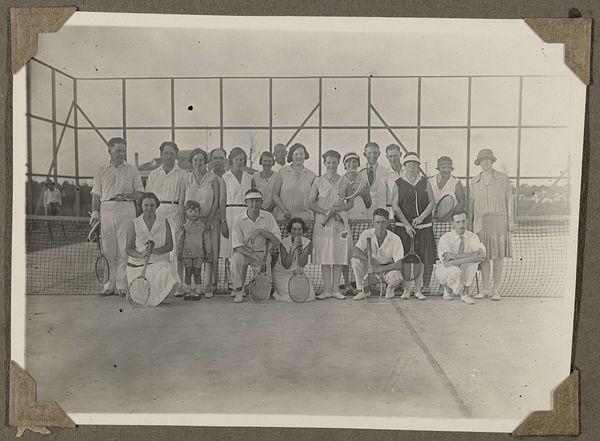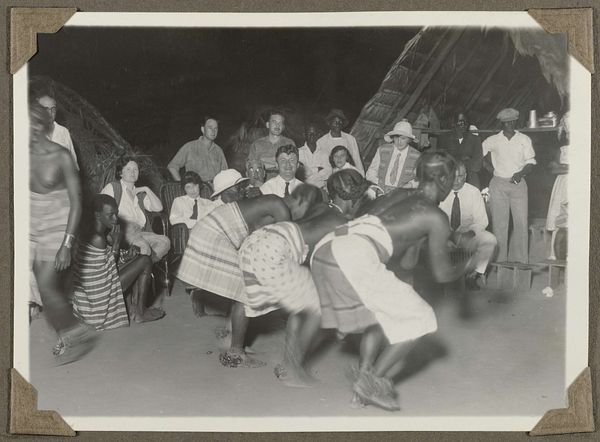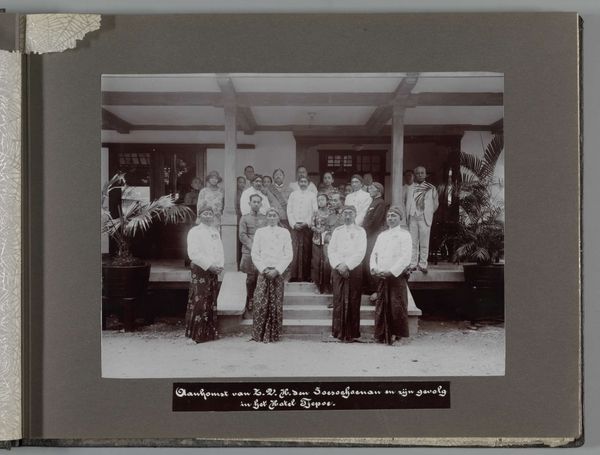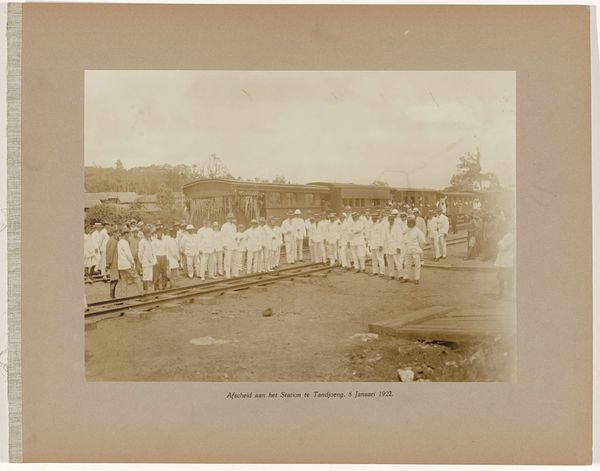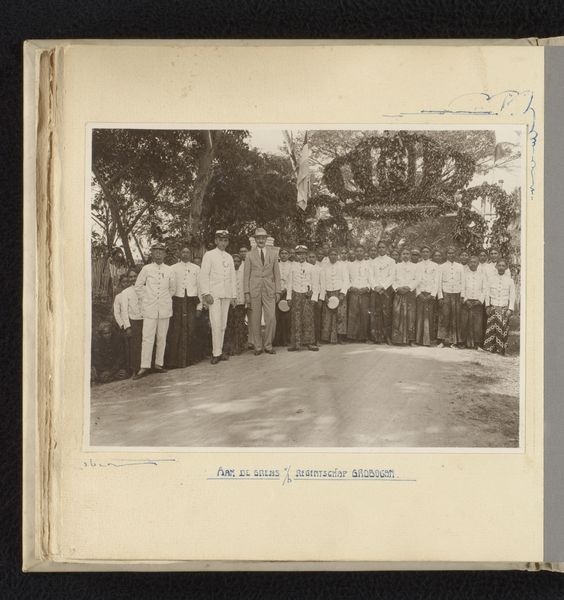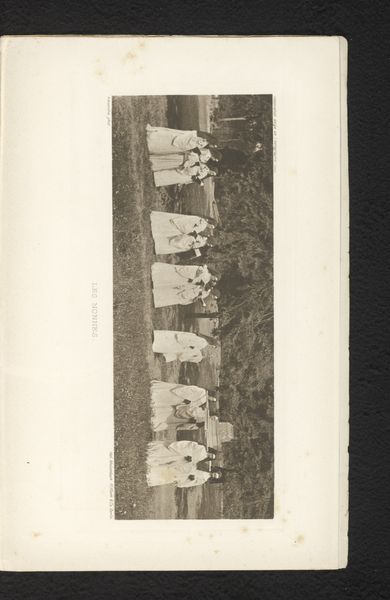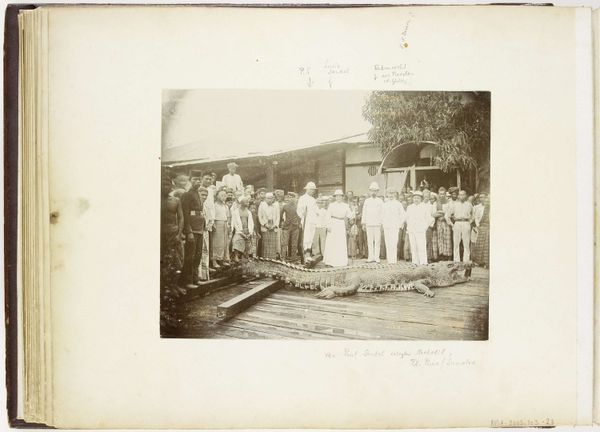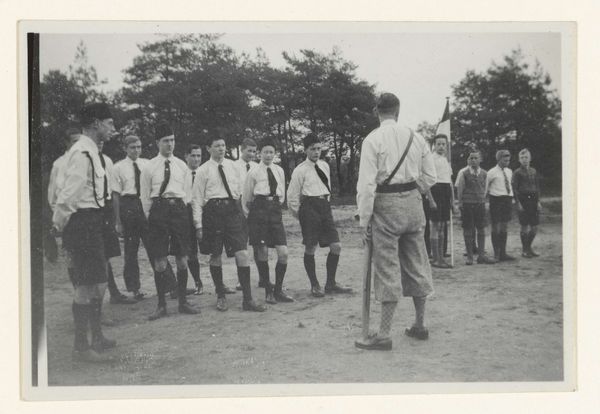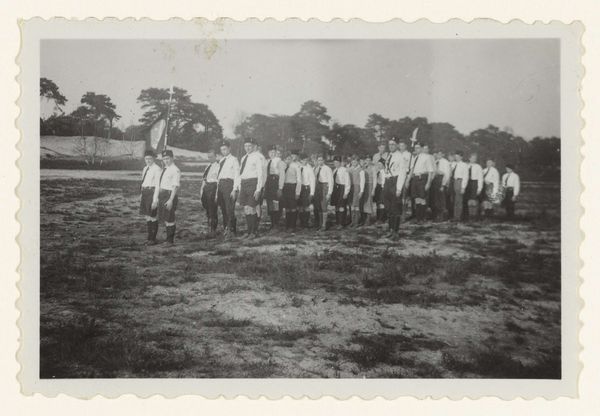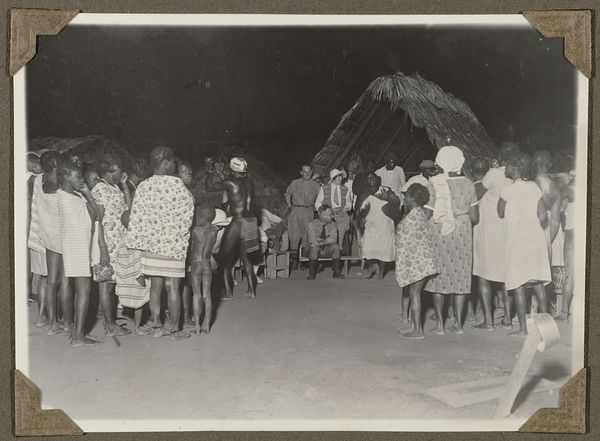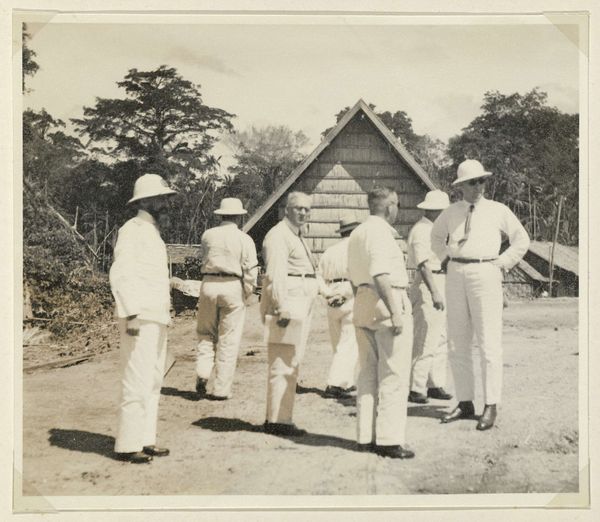
photography, gelatin-silver-print
#
photography
#
historical fashion
#
group-portraits
#
gelatin-silver-print
#
realism
Dimensions: height 83 mm, width 113 mm
Copyright: Rijks Museum: Open Domain
Curator: What strikes me first about this old photograph is how eerily still everyone seems. Editor: Indeed. Let’s orient our listeners. We are looking at a gelatin silver print, likely created sometime between 1925 and 1927. The title translates to "Group of Dutch People Visiting a Village." Curator: Dutch people...Right. Their crisp attire gives off a sense of formal, almost comical out-of-placeness against that simple thatched hut. Don’t you think? There is something dreamlike to it, you know, like a fever dream after a night of heavy cheese. Editor: I perceive this more as a visual record of a colonial encounter. Consider the power dynamics inherent in this staged portrait. The Dutch visitors are positioned almost as if they're observing or surveying the villagers. Look at the children standing there...the historical implications of that are striking. Curator: Ah yes! Of course! But look at the way light sort of dissolves around their edges. I see ghosts lurking. Are they really there, these interlopers? Or is the photograph playing tricks with the present. Editor: Perhaps the photograph makes both past and present spectral. Gelatin silver prints render reality through a very specific chemical process…it's not transparent; it is mediating this colonial narrative through the photographer’s intentions, printing choices, and the very limitations of the medium. Curator: I wonder what their real purpose was for that visit... Were they there to "help" or extract? Editor: Those motivations are intertwined historically. We should avoid romanticizing their journey...even the clothing sends a message. The lighter clothes speak volumes. It signals, perhaps falsely, a certain cleanliness or sophistication... Curator: Mmm. What strikes me, in that moment, is how this frozen frame creates so many other questions…all hanging there, uninvited. I want to go deeper in that jungle. Editor: And I hope our listeners take that journey and investigate the story told by these early twentieth-century shadows. Consider this artwork as an opportunity for reflection on colonialism's continuing consequences and historical representation.
Comments
No comments
Be the first to comment and join the conversation on the ultimate creative platform.
